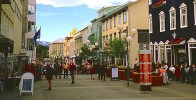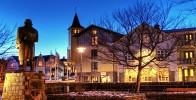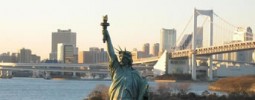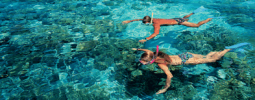Iceland is a European island country located in the North Atlantic Ocean, just south of the Arctic Circle. Greenland is 186 miles west of Iceland and 620 miles east of Iceland is Norway. It has a total area of 39,769 square miles. Iceland is divided into eight regions. About two thirds of the national population lives in the capital and largest city of Iceland, Reykjavik.
Iceland is a parliamentary republic and representative democracy, the President of Iceland serves as a diplomat, but a law to block and write a national referendum, the president is a ceremonial head of state. The current president is Ólafur Ragnar Grímsson. Iceland is split up among 26 magistrates, who represent government in various capacities.
By the lack of native trees on the island, the Icelandic architecture is influenced, you find Scandinavian influences. The houses built by the original inhabitants of Iceland were based on Viking longhouses, and were often turf and grass-covered houses. Later, the imports of many trees, wooden buildings made in the Swiss chalet style, it had a distinctive influence in Icelandic architecture. Then stone and later concrete were popular building materials.
Icelandic culture has its roots in Norse traditions. Icelandic traditional arts include weaving, silver crafting, and wood carving and there are also four active folk dance ensemble in Iceland. In the Reykjavík area are a number of professional theaters, a symphony, an opera, and there are also many art galleries and museums. In Iceland they love literature and art, play chess and other intellectual pursuits are also popular.
Iceland has many active volcanoes, like the Laki, which had an eruption in 1783–1784. There are also many geysers in Iceland, like the famous Strokkur, which every 5-10 minutes is bursting. After a period of inactivity, the eruptions of Geysir started again after a series of earthquakes in 2000. Iceland has many geothermal pools and spas throughout the country, including The Blue Lagoon on the Reykjanes peninsula, which are the most popular tourist attractions.
The steamy waters of the Blue Lagoon are a part of a lava formation, it is the most visited attraction in the country. The warm waters are rich in minerals such as sulfur and silica. Therefore can swim in the Blue Lagoon help against skin diseases. The average temperature of the water in the pools and the area is 40 °.The Álfagjá rift Valley is spanned by Leif the Lucky bridge, the valley is 60 feet wide and 20 feet deep and located near Grindavik, where the boundary of the Eurasian and North American continental tectonic plates is. It is named after the Icelandic explorer Leif Eriksson, who has traveled from Europe to America 500 years before Columbus, it was built in 2002.
In Iceland is the most common way of traffic by road. The Ring Road is a main road that runs around Iceland and all parts of the inhabited island are connected, it was completed in 1974. The most important international transport is by plane, Iceland has no railways. You do not need a visa, if you travel to Iceland with a European passport or identity card, but after returning home it should have at least 3 months validity.










